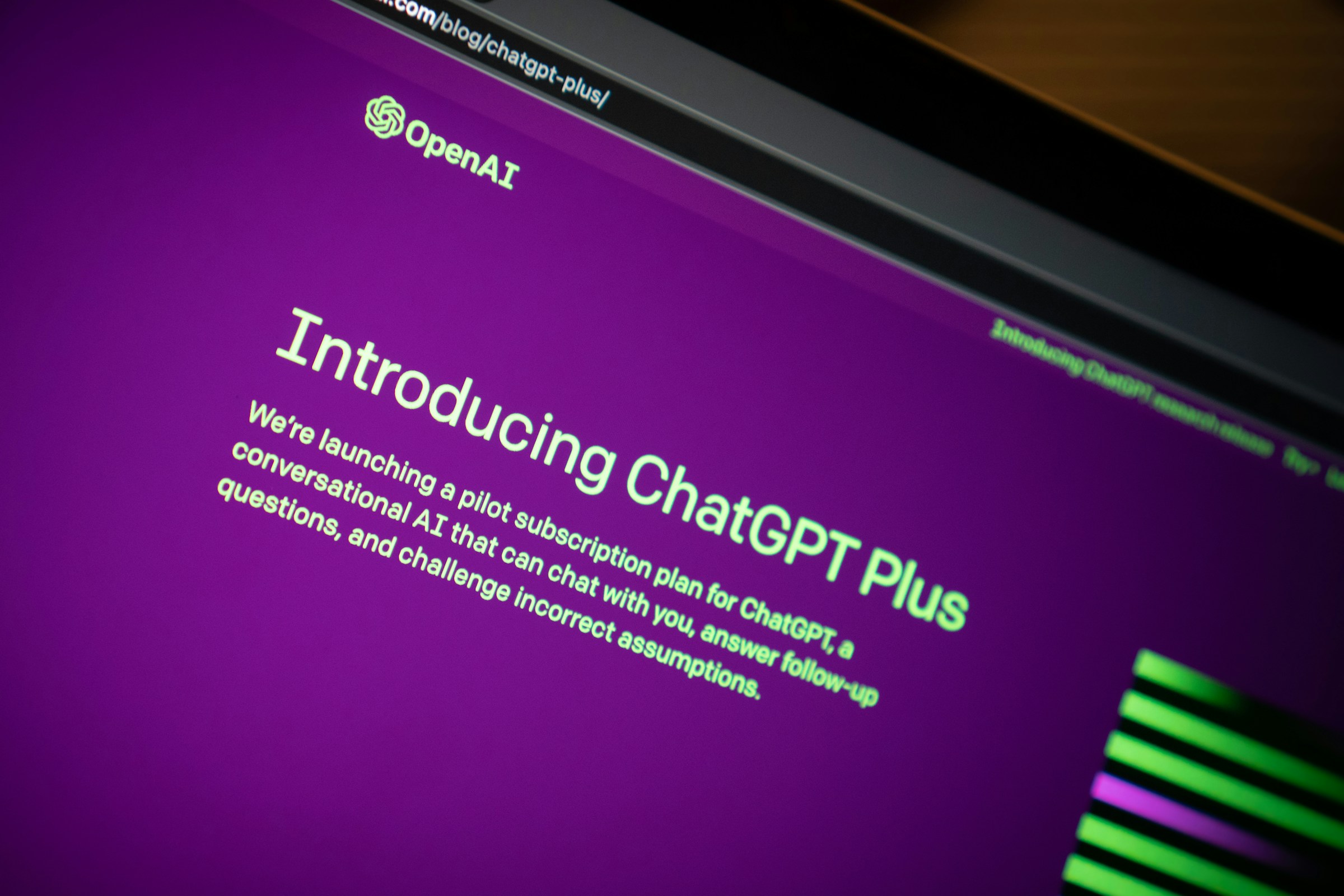20+ Best ChatGPT Prompts For Writing Efficiently

If you’ve ever stared at a blank page, you know how daunting writing can be. This is especially true for SEO writing, which requires both creativity and technical know-how. Fortunately, the best AI content writing tools like ChatGPT can help you overcome writer's block and create content that ranks. Using the proper ChatGPT prompts for writing, you can unlock the full potential of this artificial intelligence.
In this guide, we’ll explore the best ChatGPT prompts for SEO content writing to help you get started and make the process easier. These prompts will help you get organized, generate exciting ideas for your blogs or articles, and assist you in crafting the actual content.
Can ChatGPT Help With Writing?
.jpg) ChatGPT can help you write better essays. Whether you’re looking to generate ideas, create an outline, find sources, write, or edit a paper, the AI chatbot can help you tackle tedious tasks so you can focus on what matters. Using ChatGPT for writing can speed up the process and help you produce better, more organized work.
ChatGPT can help you write better essays. Whether you’re looking to generate ideas, create an outline, find sources, write, or edit a paper, the AI chatbot can help you tackle tedious tasks so you can focus on what matters. Using ChatGPT for writing can speed up the process and help you produce better, more organized work.
Generate Ideas with ChatGPT
Before writing an essay, you need to flesh out the idea. When professors assign essays, they give students a prompt that gives them leeway for self-expression and analysis. As a result, students can find the angle to approach the essay independently. If you have written an essay recently, you know that finding the angle is often the trickiest part, and this is where ChatGPT can help. All you need to do is input the assignment topic, include as much detail as you'd like, such as what you're thinking about covering, and let ChatGPT do the rest.
For example, based on a paper prompt I had in college, Can you help me develop a topic idea for this assignment, "You will write a research paper or case study on a leadership topic of your choice." I would like it to include Blake and Mouton's Managerial Leadership Grid and possibly a historical figure. Within seconds, the chatbot produced a response that provided me with the essay's title, options of historical figures on which to focus my article, insight into what information I could include in my paper, and specific examples of a case study I could use.
Create a Paper Outline Using ChatGPT
Once you have a solid topic, it’s time to start brainstorming what you want to include in the essay. I always create an outline to facilitate the writing process, including all the points I want to discuss in my essay. However, the outline-writing process is usually tedious. With ChatGPT, all you have to do is ask it to write the outline for you. Using the topic that ChatGPT helped me generate in step one, I asked the chatbot to write me an outline by saying: Can you create an outline for a paper, "Examining the Leadership Style of Abraham Lincoln through Blake and Mouton's Managerial Leadership Grid."
After a few seconds, the chatbot produced a holistic outline divided into seven sections, with three points under each section. This outline is thorough and can be condensed for a shorter essay or elaborated on for a longer paper. If you don’t like something or want to tweak the outline further, you can do so manually or with more instructions to ChatGPT. If you wish ChatGPT to include links and sources throughout, you can ask it to, and it will regenerate the answer using its web-browsing feature, further expediting your essay-writing process.
Find Sources with ChatGPT
Now that you know exactly what you want to write, it’s time to find reputable sources for your information. If you don’t know where to start, you can ask ChatGPT. All you need to do is ask the AI to find sources for your essay topic. The biggest thing to remember is to include the type of source you want, whether web pages, books, PDFs, research, papers, etc.
The specifics are necessary because when you specify web pages, ChatGPT will activate the web browsing feature and include web links in its article. If you use a very general prompt, however, it will likely default to generating its answer from its database, which isn’t up to date. For example, I asked, "Examining the Leadership Style of Abraham Lincoln through Blake and Mouton's Managerial Leadership Grid."
The chatbot outputs links, accessible right at the top of the answer under the drop-down that says "Searched of sites." Then, within the response, it will answer your prompt conversationally, including sources with site names and links in parathesis.
Write an Essay Using ChatGPT
It is worth noting that if you take the text directly from the chatbot and submit it, your work could be considered plagiarism since it is not your original work as with any information taken from another source, text generated by an AI should be identified, and credited to the chatbot in your work. In most educational institutions, the penalties for plagiarism are severe, ranging from a failing grade to expulsion from the school.
A better use of ChatGPT's writing features would be to create a sample essay to guide your writing. If you still want ChatGPT to create an essay from scratch, enter the topic and the desired length. For example, I have included the following text: Can you write a five-paragraph essay on the subject, "Examining the Leadership Style of Abraham Lincoln through Blake and Mouton's Managerial Leadership Grid?" Within seconds, the chatbot gave the exact output I required: a coherent, five-paragraph essay on the topic. You could then use that text to guide your writing.
At this point, it’s worth remembering how tools like ChatGPT work: they put words together in a form that they think is statistically valid, but they don’t know if what they say is true or accurate. As a result, the output you receive might include invented facts, details, or other oddities. The output might be a helpful starting point for your work but don’t expect it to be accurate. Always double-check the content.
Co-Edit Your Essay with ChatGPT
Once you’ve written your essay, you can edit the piece using ChatGPT’s advanced writing capabilities. You can simply tell the chatbot what you want it to edit. For example, I asked ChatGPT to edit our five-paragraph essay for structure and grammar, but other options could have included flow, tone, and more. Once you request the tool to edit your essay, it will prompt you to paste your text into the chatbot.
ChatGPT will then output your essay with corrections made. This feature is handy because ChatGPT edits your essay more thoroughly than an essential proofreading tool, as it goes beyond simply checking spelling. You can also co-edit with the chatbot, asking it to review a specific paragraph or sentence and rewrite or fix the text for clarity. This feature is beneficial.
What Is A ChatGPT Prompt?
 A prompt for ChatGPT is a topic or instruction that a user gives to the ChatGPT AI model to get a response. The prompt can be a statement, question, or any other stimulus to get the AI thinking and generating text. Users can use the prompt to generate ideas, start a conversation, or share their thoughts on a subject. Prompts for ChatGPT are open-ended and can be customized based on a user’s preferences and needs.
A prompt for ChatGPT is a topic or instruction that a user gives to the ChatGPT AI model to get a response. The prompt can be a statement, question, or any other stimulus to get the AI thinking and generating text. Users can use the prompt to generate ideas, start a conversation, or share their thoughts on a subject. Prompts for ChatGPT are open-ended and can be customized based on a user’s preferences and needs.
Related Reading
How To Prompt ChatGPT To Write Like A Professional?
.jpg) Talk to AI Like It's Your Coworker
Talk to AI Like It's Your Coworker
When using ChatGPT, consider it a colleague or teammate who can assist you with brainstorming and writing. So, don't just program it with a few commands to get going. Instead, have a conversation with it. Start by asking it to write on a specific topic or give a summary or bullet points about something. Then, based on what it produces, ask follow-up questions to get more detail or clarify particular responses. If I were to write an article about using ChatGPT for SEO, it might look something like this:
First, I'd open a new chat and type: "Help me write an article about using ChatGPT for SEO." Next, let it whittle the opening paragraph and produce bullet points. Then, I'd ask follow-up questions like: "Can you elaborate on the first bullet?" "What else can I include about this?" "Can you write a short paragraph to include in my article?" "Now, let's say I want to write this section more informally. Can you rewrite what you produced with that in mind?" You get the idea. The more you interact with the AI, the better your results will become.
Provide the AI with Plenty of Context
When you prompt ChatGPT, think of it like asking a question to a brilliant person. The more context you provide, the better the answer will be. For example, if I want to learn how to prepare for a marathon, I could prompt: "How can I prepare for a marathon?" But I'd get a more nuanced answer if I added that I'm training for my first marathon. Instead, I'd ask: "I am a beginner runner and have never run a marathon, but I want to complete one in six months. How can I prepare for a marathon?" I'm helping the AI return a more focused answer by giving it more information.
Tell the AI to Assume an Identity or Profession
One of ChatGPT's most excellent features is that it can write from the point of view of a specific person or profession. In a previous article, I showed how you can make ChatGPT write like a pirate or Shakespeare, but you can also have it write like a teacher, a marketing executive, a fiction writer -- anyone you want. For example, I can ask ChatGPT to describe the Amazon Echo smart home device but to do so from the point of view of its product manager, a caregiver, and a journalist in three separate prompts:
From the point of view of its product manager, describe the Amazon Echo Alexa device. From the point of view of an adult child caring for an elderly parent, tell the Amazon Echo Alexa device. From the point of view of a journalist, describe the Amazon Echo Alexa device.
Try dropping these three prompts into ChatGPT to see its complete response. I've pulled a few lines from ChatGPT's responses to see how it interprets different perspectives. From the product manager identity: I can confidently say this is one of the smart home industry's most innovative and revolutionary products. From the caregiver identity: The device's ability to set reminders and alarms can benefit elderly individuals who may have trouble remembering to take their medication or attend appointments. From the journalist identity: From a journalistic perspective, the Echo has made headlines due to privacy concerns surrounding the collection and storage of user data. You can see how different identities allow the AI to provide different perspectives in response. To expand this, you can let the AI do a thought experiment. Let's look at some of the issues that went into creating something like Alexa: 2012. Siri has been out for the iPhone for about a year, but nothing like an Alexa smart home device has been released.
The scene is an Amazon board meeting where the Echo intelligent assistant based on Alexa has just been proposed. Provide the arguments, pros, and cons that board members at that meeting would have been likely to discuss as part of deciding whether to approve spending to invest in developing the device. Feel free to include participation by engineering design experts and product champions if that provides a more comprehensive perspective.
Keep ChatGPT On Track
As mentioned above, ChatGPT tends to stay on the rails, lose track of the discussion, or completely fabricate answers. You can use a few techniques to help keep it on track and honest. One of my favorite things is asking ChatGPT to justify its responses. I'll use phrases like "Why do you think that?" or "What evidence supports your answer?" The AI will often apologize for making stuff up and come back with a new answer. Other times, it might give helpful information about its reasoning path.
In any case, remember to apply the tips I provide to have ChatGPT cite sources. If you have a fairly lengthy conversation with ChatGPT, you'll start to notice that the AI loses the thread. Not that that's unique to AIs; even in extended conversations with humans, someone is bound to get lost. You can gently guide the AI back on track by reminding it what the topic is and what we're trying to explore.
I've had some luck by telling the AI to re-read my prompt. The technique is to issue a prompt, then tell the AI something like: "re-read this," and follow that up with the exact prompt passed earlier. You could refine or add to the prompt and see what happens. The idea is that re-reading forces the AI to rethink and clarify what it just read.
Don't Be Afraid to Play and Experiment
One of the best ways to improve your skill in this craft is to play around with what the chatbot can do. Try feeding ChatGPT a variety of exciting prompts to see what it will do with them. Then, change them up and see what happens. Here are five to get you started:
Imagine you are a raindrop falling from the sky during a thunderstorm. Describe your journey from when you form in the cloud to when you hit the ground. What do you see, feel, and experience? You are a toy left behind in an attic for decades. Narrate my feelings, memories of playtimes past, and my hopes of being rediscovered. Write the final diary entry of a time traveler who has decided to settle down in a specific era, explaining why they chose that time and what they've learned from their travels. Imagine a dialogue between two unlikely objects, like a teacup and a wristwatch, discussing the daily routines and challenges they face. Describe a day in an ant colony from the perspective of an ant. Dive deep into the ant world's politics, challenges, and social structures. Also, If AI is unique, why does ChatGPT meltdown over this simple image edit task? Pay attention not only to what the AI generates but how it generates what it does, what mistakes it makes, and where it seems to run into limits. All of those details will help you expand your prompting horizons.
Related Reading
20+ Best ChatGPT Prompts For Writing Efficiently
 Academic Writing Prompts
Academic Writing Prompts
1. Critical Analysis
Analyze the impact of social media on academic performance among university students.
2. Literature Review
Review the most recent research on the ethical implications of AI in healthcare.
3. Argumentative Essay
Argue for or against the implementation of universal basic income in developed countries.
4. Research Proposal
Propose a study investigating the relationship between climate change and migration patterns."
5. Case Study
Write a case study on a successful public health campaign and its long-term effects.
6. Comparative Analysis
Compare the education systems of two countries and analyze their impact on student success."
7. Theory Application
Apply Maslow's hierarchy of needs to understand the motivations behind consumer behavior.
8. Policy Review
Critically evaluate a current government policy related to renewable energy and suggest improvements.
9. Literature Synthesis
Synthesize findings from multiple studies on the role of technology in modern education.
10. Experimental Design
Design an experiment to test the effects of sleep deprivation on cognitive performance.
Blog Writing Prompts
11. How-To Guide
Write a comprehensive guide on how to optimize your website for search engines (SEO).
12. Opinion Piece
Share your thoughts on the future of remote work and its potential impact on work-life balance.
13. Industry Trends
Discuss the latest trends in sustainable fashion and how they shape the industry.
14. Personal Experience
Write about your journey to mastering a new skill and the lessons you learned.
15. Product Review
Review the pros and cons of a popular productivity tool and provide recommendations.
16. Interview Article
Interview with an expert in your field and summarize the key takeaways.
17. Listicle
Create a list of the top 10 books every entrepreneur should read and explain why.
18. Data-driven analysis
analyzes the latest statistics on e-commerce growth and what they mean for small businesses.
19. Myth Busting
Use evidence and research to debunk common myths about a topic you're passionate about.
20. Beginner’s Guide
Write a beginner's guide to understand the basics of cryptocurrency and blockchain technology.
21. Content Strategy
Outline a content strategy for a brand looking to increase its online presence.
22. Ethical Debate
Discuss the ethical implications of influencer marketing and its impact on consumer behavior.
23. Educational Resource
Create an educational resource on effective time management techniques for students.
24. Case Study Blog
Write a blog post analyzing a successful marketing campaign and the strategies used.
8 Best ChatGPT Alternatives for Writing
 1. Journalist AI: Your Automated SEO Content Writing Assistant
1. Journalist AI: Your Automated SEO Content Writing Assistant
Journalist AI is an AI SEO writer that automatically publishes your blog. With Journalist's AI writing, Google indexing, content syndication, "SEO-optimized" writing, content publishing features, and many automations that save you time, Journalist makes it easy for companies to write high-quality content at scale. Journalist is the best B2B AI writing tool. Sign up today to get three free articles from our AI article writer.
2. ChatSonic: The Feature-Rich ChatGPT Alternative
ChatSonic by Writesonic is an alternative to ChatGPT that offers advanced features like Google search integration, up-to-date factual content, voice commands, and image generation. Unlike ChatGPT, ChatSonic is integrated with Google, enabling it to provide the latest results on any search topic available on the internet. This advanced AI chatbot can assist with real-time data, image searches, and voice commands, making it a valuable tool for research and content creation. While ChatSonic has several advantages, including image generation and Google search data, it also has some limitations, such as pricing and limited access to the latest language models.
Pros
Google search integration for up-to-date content
Advanced AI chatbot features like voice commands and image generation
Easy access and user-friendly interface
Ideal for users already using Writesonic
Cons
Pricing may be a limitation for some users
Limited access to the latest language models
Useless features like templates and chat personalities
3. Gemini: A Search-Integrated Content Tool From Google
Gemini is an AI tool similar to ChatGPT that helps users brainstorm ideas, craft scripts, and generate content across various formats. Integrated with Google's search capabilities, Gemini provides accurate and informative content, making it a valuable resource for research and knowledge. The tool's multimodal capabilities allow it to process text, images, and other formats, expanding its applications across different industries.
Gemini also demonstrates reasoning and problem-solving skills, potentially improving its capabilities through ongoing research and development. Users within the Google ecosystem can seamlessly integrate Gemini with other Google tools and services, streamlining their workflow.
Pros
Informative and accurate content generation
Multimodal capabilities across text, images, and other formats
Potential for continuous improvement and enhanced capabilities
Seamless integration with Google tools and services
Cons
Limited public access may restrict adoption and testing
Risk of inaccurate information
Inherited biases and creative limitations
4. Jasper AI: The Versatile AI Content Generator
Jasper.ai is an AI writing tool that generates marketing copy for various purposes like blog posts, product descriptions, company bios, ad copy, and social media captions. With hundreds of templates, Jasper.ai simplifies content creation for marketers of all levels. The tool's ability to generate high-quality content quickly and efficiently is beneficial for companies looking to scale up their content production. Jasper.ai has several advantages, including natural-sounding content generation, limitations like lack of personality and voice, the potential need for heavy editing, and struggles with niche topics.
Pros
Quick content generation within seconds
Natural-sounding, well-written, and accurate output
Sparks new ideas and angles for content creation
Affordable pricing for small businesses
Cons
Lack of personality and voice in content
It may require heavy editing for specific content types
Struggles with niche topics and lacks fact-checking capabilities
5. Jenni AI: Your Personal Writing Assistant
Jenni AI is an AI-powered writing tool that assists students in generating ideas, optimizing their writing, and improving SEO. This tool provides personalized writing assistance, offers prompts, generates drafts, and aligns with chosen style guides to jumpstart the writing process.
It also includes paraphrasing and rewriting support, with an in-built plagiarism checker, allowing users to transform content quickly. While Jenni AI has numerous advantages, including personalized writing assistance and research integration, it also has limitations like reduced speed of content creation and limited content types and tone suggestions.
Pros
Personalized line-by-line writing assistance
Writing prompts and initial draft generation capabilities
Paraphrasing and rewriting support with plagiarism checker
Built-in research engine for content creation
Cons
Reduced speed of content creation
Limited content types and tone suggestions
Risk of meaning changes in paraphrasing
Limited translation support for non-native English speakers
6. Microsoft Bing AI: The Search Engine on Steroids
Microsoft Bing AI is an AI-powered search functionality incorporating GPT-4 technology to deliver timely and relevant search results. This virtual assistant can understand complex prompts, provide advanced search features, access real-time information, and offer rich media search options. Integrated with the Microsoft ecosystem, Bing AI enhances user workflows, leverages natural language processing and conversational search capabilities, and prioritizes user privacy and security. Despite its advantages, Bing AI may need help with its lower popularity than Google and potential variability in search accuracy and feature lag.
Pros
Tight integration with Microsoft products
Advanced search features and contextual understanding
Up-to-date information and real-time data access
Robust search options for various media types
Cons
Less popular than Google
Perception and familiarity challenges
Potential variability in search accuracy
Feature lag compared to competitors
7. DialoGPT: The Conversational AI Model
DialoGPT is an AI model tailored for human-like conversations and can engage in natural dialogues on diverse topics. This large-scale transformer model retains context over multiple conversational turns, handles various topics and conversational styles, and can be fine-tuned for specific applications or industries.
DialoGPT users can integrate it into chatbots, customer service solutions, and virtual assistants to enhance user interactions. While DialoGPT has numerous advantages, such as contextual awareness and training on diverse data, it also faces challenges like response quality variability and maintaining coherence during more prolonged or complex conversations.
Pros
Context maintenance over multiple conversation turns
Trained on a large dataset of conversations
Customizable for specific applications or industries
Integration potential with various applications
Cons
Response quality variability
Context limitation in longer or complex conversations
Lack of real-world knowledge and potential biases
Inaccuracies in responses
8. Google's Bard AI: The Experimental Chatbot
Google's Bard AI is an experimental conversational AI service built on the LaMDA technology, offering an AI-powered search and response functionality. This AI chatbot can answer user queries, access the latest information, and assist with tasks like restaurant reservations and flight bookings. Integrated with Google services, Bard AI benefits from Google's vast data resources to generate informative and contextually relevant answers. While Bard AI has several advantages, like integration with Google's ecosystem and rich contextual knowledge, it also faces challenges such as dependence on Google's data, privacy concerns, and response variability.
Pros
Integration with Google services and data resources
Rich contextual knowledge and informative responses
Natural solid language generation capabilities
Continuous updates and improvements through Google's ecosystem
Cons
Dependence on Google's data and potential biases
Privacy concerns regarding user data handling
Response variability and accuracy challenges
Limited personalization capabilities
Pros and Cons of Using ChatGPT for Writing
 Pros of Using ChatGPT for Writing
Pros of Using ChatGPT for Writing
Save Time and Write Faster with AI
ChatGPT helps you write faster. The AI can generate content in seconds, helping you save time and effort writing. You can use ChatGPT to brainstorm ideas, provide structure, and even draft sections of your blog post. Overall, this makes the writing process more efficient.
Generate Content on Any Topic
ChatGPT can create content about virtually any subject and niche. This AI writing tool can help you no matter what your blog focuses on. It can adapt to different writing styles and tones, allowing you to customize the content to match your brand or audience.
Improve Your Writing Quality
ChatGPT is trained on vast text data, enabling it to generate coherent and grammatically correct sentences. Using this AI tool can help you maintain a high level of language proficiency in your blog posts.
Get Creative with Idea Generation
ChatGPT can help you generate ideas and suggest unique perspectives, which can be valuable in brainstorming sessions. Using this AI tool can enhance the creativity of your blog posts by providing fresh insights, unique angles, and alternative viewpoints.
Access the AI Anytime
ChatGPT is accessible 24/7, allowing you to work on your blog posts whenever needed. You don’t have to wait for human assistance or be limited by time zone differences.
The Drawbacks of Using ChatGPT for Writing
No Human Touch
ChatGPT, being an AI model, lacks the human touch and nuance that comes with personal experience and emotions. While it can mimic writing styles and learn from human writers, it may need help to capture nuances, cultural references, or context-specific elements that a human writer naturally incorporates.
Limited Knowledge
While ChatGPT has a vast knowledge base, its information is based on the data it was trained on, which may not include the most up-to-date or specialized domain knowledge. Fact-checking and verifying any specific or technical information provided by ChatGPT is essential.
Quality Control Issues
ChatGPT’s output may not consistently meet the highest quality standards as an AI model. It can produce grammatical errors, generate incomplete or irrelevant sentences, or provide inaccurate information. Manual editing and proofreading are necessary to ensure the final blog post meets your desired level of quality.
Risks of Plagiarism
ChatGPT may rely on patterns or phrases from the training data, potentially leading to unintentional similarities with existing content. Plagiarism checks and careful editing are essential to maintain originality and avoid copyright issues.
Lacks Personal Voice
ChatGPT may need help capturing your unique voice and personal style as a writer. Your blog posts may feel less authentic or reflective of your individuality than content produced by a human writer.
Get 3 Free Articles from Journalist AI's AI Article Writer Today
Journalist AI is the AI SEO writer who auto-publishes your blog. With Journalist's AI writing, Google indexing, content syndication, SEO-optimized writing, content publishing features, and many automations that save you time, Journalist makes it as easy as possible for companies to write high-quality content at scale. Journalist is the best B2B AI writing tool. Sign up today to get three free articles from our AI article writer.
Related Reading

Generate, publish, syndicate and update articles automatically
The AI SEO Writer that Auto-Publishes to your Blog
-
No card required
-
Articles in 30 secs
-
Plagiarism Free

